Young people's participation in decision making: attitudes and perceptions
Research on young people’s involvement in decision making in schools and out-of-school activities and groups through the Young People in Scotland survey.
4. Views on Decision making in schools
The survey also included a number of questions on how much say pupils have in the running of their school. Wording is slightly different as these questions were commissioned as part of a separate question set, but they complement the questions about out of school activities.
Pupils were asked how much say they have over:
- What they learn
- How they learn, defined as 'which teaching and learning methods are used or which activities they do'
- Decisions which affect the school as a whole
What they learn
When asked how much say they have over what they learn in school, 34 per cent of pupils said that they had either 'a lot' or 'some' say in what they learn. Over half (51 per cent) said they had 'little' or 'no' say in in what they learn. Figure 4.1 Illustrates.
This pattern is similar to the pattern of responses in 2017 when 33 per cent of students said they had a lot or some say and 55 per cent said they had little or no say on what they learn.
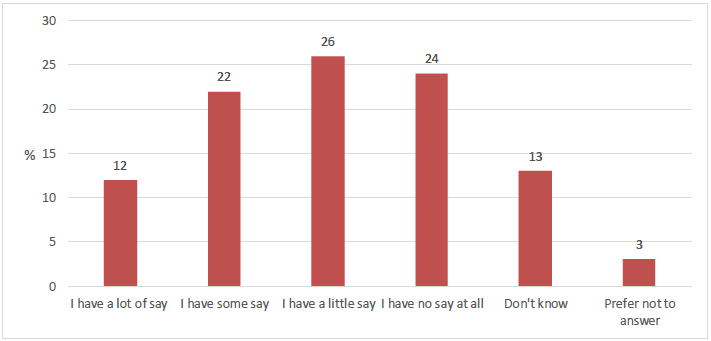
Base: 1731
As Figure 4.2 shows, boys were more positive than girls, with 38 per cent of boys saying that they had a lot of some say over what they learn, compared with 31 per cent of girls.
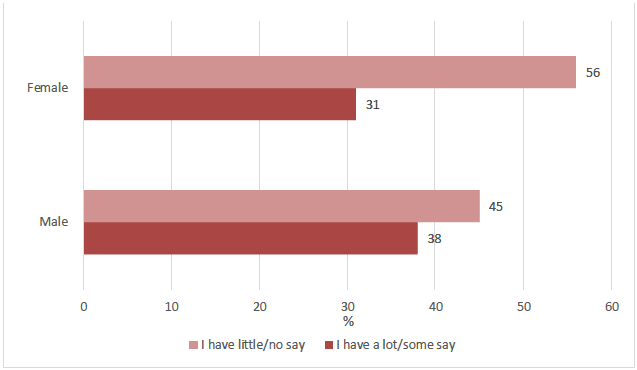
Base: 1731
As Figure 4.3 shows, those in S1 were the most positive, with 43 per cent agreeing they had a lot or some say, compared to around three in ten in S3-S6. The percentage of pupils who said that they had little or no say increased consistently with school year. Pupils in S6 were more than twice as likely to say they had little or no say (64 per cent) as pupils in S1 (31 per cent).
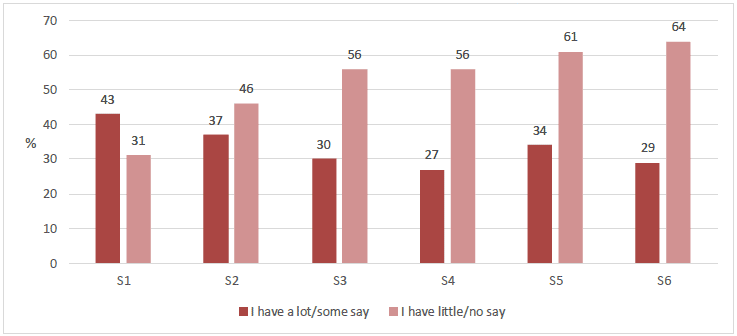
Base: 1731
Differences by area deprivation were not large in terms of the percentage indicating they have a lot or some say, although those in the two most deprived areas were slightly more positive than those in the other quintiles. Those in the SIMD 4 were also the most likely to say that they had little or no say. Figure 4.4 illustrates.
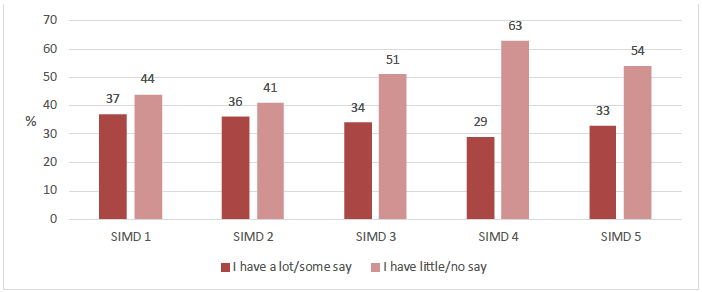
Base: 1731
How they learn
When asked about how they learn, 45 per cent said that they had 'little' or 'no' say in how they learn while 36 per cent said that they had 'a lot' or 'some' say. Figure 4.5 illustrates.
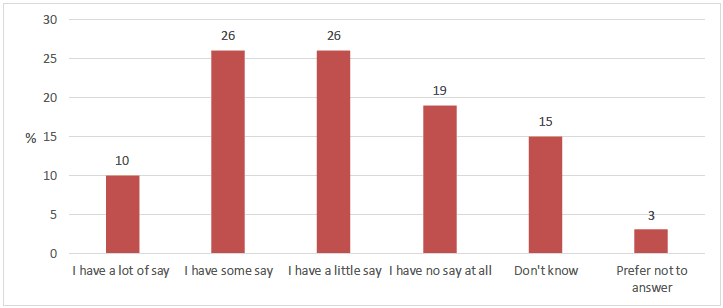
Base: 1731
Again, there was little difference between responses in 2019 and 2017, when 48 per cent said they had little or no say and 39 per cent said they had some or a lot of say.
As Figure 4.6 shows, there was little difference in the percentage of boys and girls who said they had a lot or some say, but girls were more likely to say that they had little or no say (49 per cent) than boys (41 per cent).
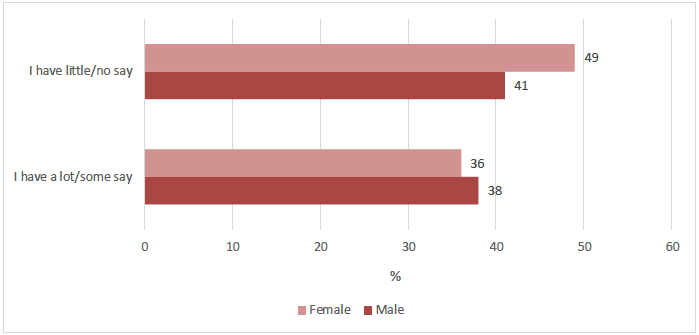
Base: 1731
In terms of school year, respondents in S3 and S4 were less likely (both 31 per cent) to say that they had a lot or some say than both the lower and higher older school years (39 to 41 per cent). Figure 4.7 illustrates.
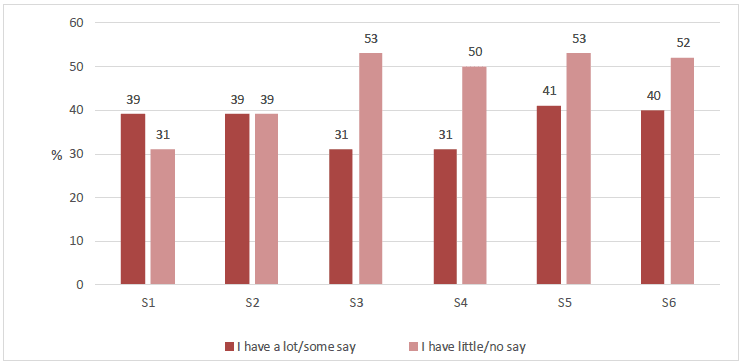
There was no consistent pattern by area deprivation and differences were not large. Figure 4.8 illustrates.
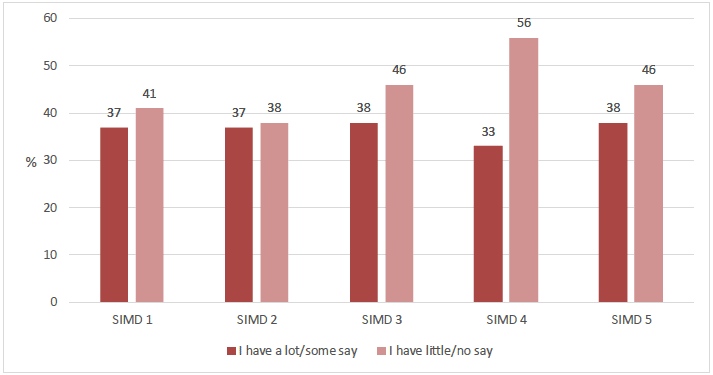
Base: 1731
Decisions affecting the whole school
Survey respondents were asked how much say they had over decisions that affect the whole school. As Figure 4.9 shows, around three in ten (29 per cent) said they had 'a lot' or 'some' say, while just over half of respondents said that they had 'little' or 'no' say on decisions that affect the whole school.
There was no significant difference between responses to this question and responses when the question was asked in 2017.
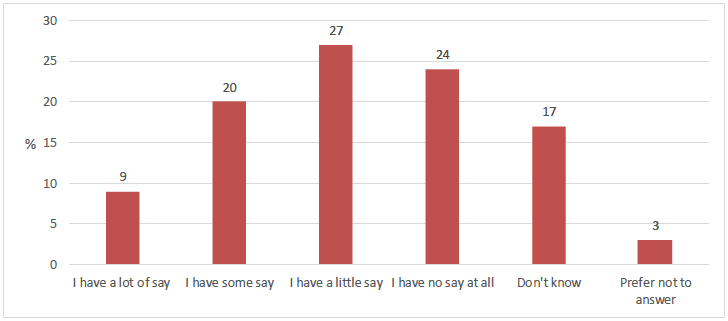
Base: 1731
The percentage who said that they had 'little' or 'no' say on decisions that affect the whole school increased with school year. The difference between S1 and S6 was large: 36 per cent of pupils in S1 said that they had 'little' or 'no' say on decisions that affect the whole school compared to pupils in S5 and S6 (both 61 per cent). There was no consistent pattern by school year of those who said they had 'a lot' or 'some' say on decisions that affect the whole school. However, those in S1 and S2 were most likely (both 33 per cent) to say that they had 'a lot' or 'some' say, compared with pupils in S4 (23 per cent). Figure 4.10 illustrates.
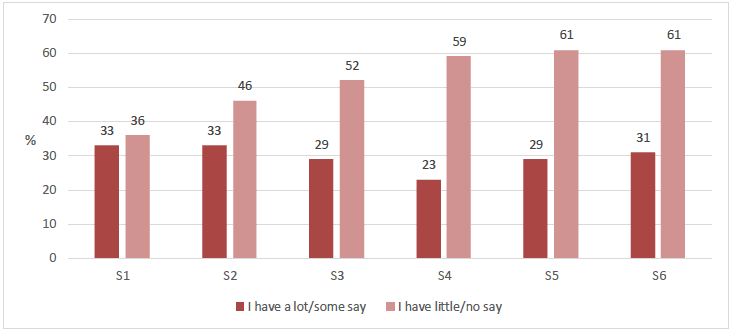
Base: 1731
As Figure 4.11 shows, there was no consistent directional pattern by area deprivation
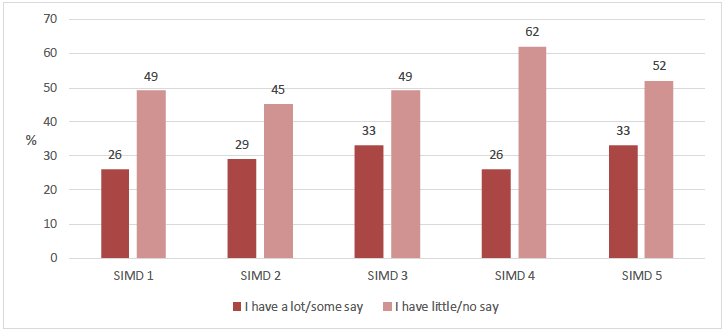
Base: 1731
There was no significant gender difference in response to this question.
Contact
Email: socialresearch@gov.scot
There is a problem
Thanks for your feedback